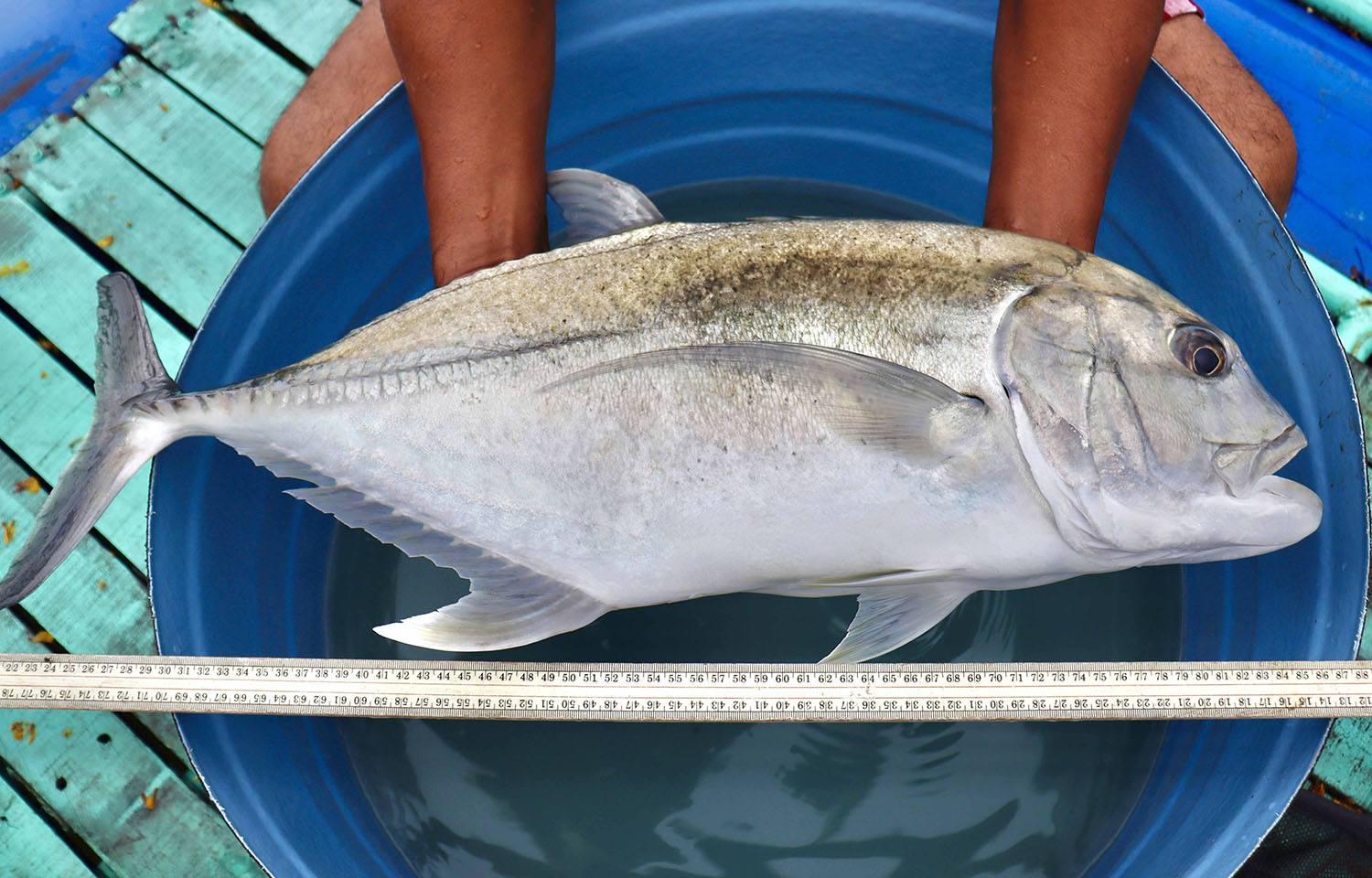The Indian Council of Agricultural Research’s Central Marine Fisheries Research Institute (ICAR-CMFRI) has announced it has successfully induced breeding and seed production of the giant trevally (Caranx ignobilis).
The research organization, supported by the Indian government, called it “a landmark achievement for mariculture research.”
“The giant trevally is a fast-growing, important food fish that can be farmed in marine and estuarine cages, pens, and coastal ponds. This fish can grow faster than pompanos and can tolerate wider salinity ranges and water-quality conditions,” CMFRI Director A Gopalakrishnan, who retired 31 July, said. “The achievement is a breakthrough in mariculture and is a significant advancement in the efforts to sustainably manage and conserve giant trevally as a new candidate species in the mariculture sector.”
Ambarish P Gop, M Sakthivel, and B Santhosh, who are marine science researchers at ICAR-CMFRI’s Vizhinjam Regional Center, were credited with the achievement, supported by funding from India’s Ministry of Science and Technology Biotechnology Department.
CMFRI said “extensive research and trials were required to overcome challenges due to specific breeding requirements and the complex reproductive biology of the fish.”
“This involved meticulous monitoring of its behavior, hormone administration, and precise environmental control,” it said.
Giant trevally is caught and eaten across the Indo-Pacific region, noted for its firm flesh and tastiness, according to CMFRI. It sells for INR 400 to INR 700 (USD 4.77 to USD 8.35, EUR 4.42 to EUR 7.74) per kilogram.
“This fish is well-known for its large size and has immense potential in the mariculture sector, typically found in coastal reefs, lagoons, and open seas,” it said. “CMFRI’s initial cage farming trials with pellet feed indicated that this fish reaches marketable size up to 500 grams in five months and around 1 kilogram in eight-month culture.”
Gopalakrishnan said CMFRI will press on with creating formal aquaculture protocols for the giant trevally to scale up production.
“The initial success of the giant trevally's captive seed production is expected to pave the way for large-scale fish seed production and farming of this marine fish,” Gopalakrishnan said. “Giant trevally is a fast-growing, hardy species that can be easily farmed using pellet diets throughout the culture period.”








